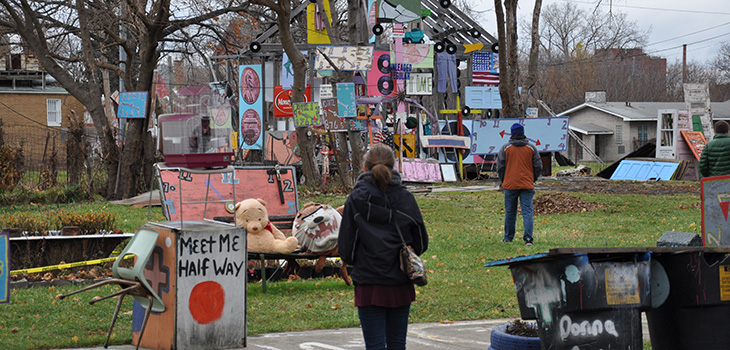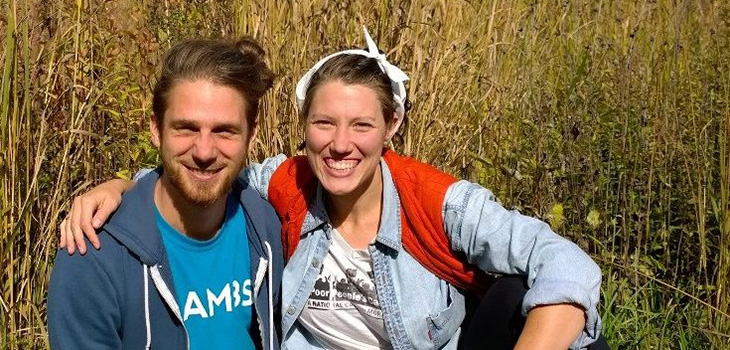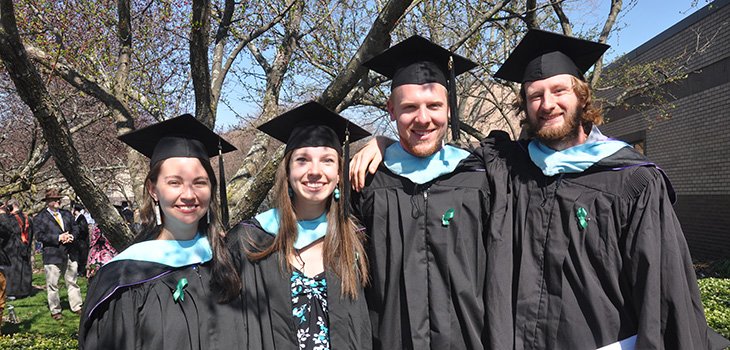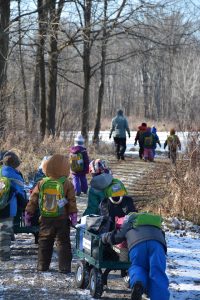 From dinosaurs to dead deer
From dinosaurs to dead deer
What happens when children’s interests drive education? Merry Lea’s Nature Preschool could offer plenty of examples. In one case, it all began with dinosaurs.
Dinosaurs fascinate many preschoolers. In some settings, this would be considered a distraction, but under the direction of Reggio-trained* teachers from the Cole Center Family YMCA in Kendallville, it became a jumping-off point for many kinds of learning. In their indoor classroom at Central Noble Primary School in Wolf Lake, the class compared the sizes of different dinosaurs and discussed measurements. They looked at skeletons and became interested in bones.
Bringing a classroom interest outside
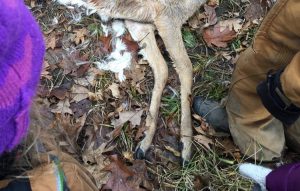 Merry Lea’s Carol Good-Elliott, who teaches the outdoor portion of the preschool, picked up on these interests. Since birds evolved from dinosaurs and retain similar features, she showed the children a stuffed mount of a cooper’s hawk. They looked at the bird’s talons and other adaptations and made connections to dinosaurs.
Merry Lea’s Carol Good-Elliott, who teaches the outdoor portion of the preschool, picked up on these interests. Since birds evolved from dinosaurs and retain similar features, she showed the children a stuffed mount of a cooper’s hawk. They looked at the bird’s talons and other adaptations and made connections to dinosaurs.
Carol provided a chicken skeleton for the children to assemble and hid turkey bones in the outdoor classroom for children to find. She even procured a road-killed rabbit so that the group could observe how bodies change after death, returning to the earth but leaving some parts behind for a longer period of time.
A scavenger got the rabbit before the children ever saw it, but nature provided an alternative. On an excursion day while walking home from the Merry Lea Sustainable Farm, the preschoolers came upon a dead deer.
“The other teachers thought I knew it was there. I was completely surprised!” Carol remarked.
The children were fascinated and asked many questions. Since they’d just been playing with goats at the farm, they could make comparisons between the two species of hoofed ruminants. They pointed out how similar the animals’ legs were.
“Can we take it back to our classroom?” the children wondered. Most adults might have responded, “It’s yucky! Don’t touch!” Carol took another approach.
“I’m not going to carry it back to the classroom,” she countered.
“It stinks!”
“What do you think would happen if we did take it back to our classroom?”
“If we leave it here, something might take it away.”
“That would be interesting too. What would that tell us about animals that are here that we don’t get to see?”
What to do with the remains?
The next week on another walk, the group found the dead deer again. This time, it was in more manageable pieces and the children did carry some of it back to the classroom. There, they discussed what they could do with the remains.
“We could use the bones to build a monster truck.”
“We could try connecting them back together so we could see how they work.”
“We could build a special house for them, like a museum.”
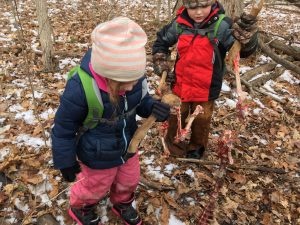 “We could bury them,” volunteered a child who had been to a funeral.
“We could bury them,” volunteered a child who had been to a funeral.
Parents may struggle to know how to talk about death with young children, but in the wild, it is evident everywhere: in fallen trees, decomposing leaf litter and the occasional animal carcass.
Leaders did not set out to teach about decomposition. There were no fill-in-the-blank worksheets on the names of bones or lectures explaining what death is. Instead, the children took the initiative to explore these things in their own way, creating memories that may remain with them all of their lives.

